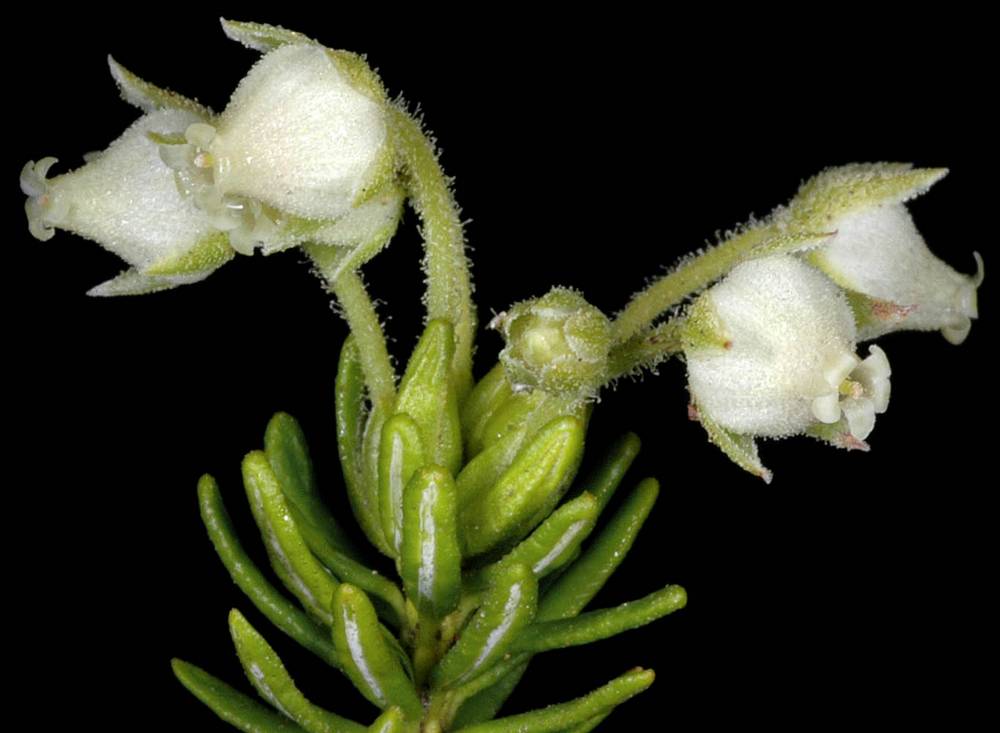
Plants erect to decumbent, 10–35 cm, much branched and often matted.
Stems younger branches glandular-pubescent, older branches glabrous.
Leaves overlapping, generally curving upward, becoming straight with maturity, 4–12 × 1–2 mm, margins revolute, glandular-serrulate, surfaces abaxially grooved and glandular, adaxially glabrous to glandular.
Inflorescences 1–9-flowered; pedicels ? 3 cm, glandular.
Flowers sepals narrowly ovate to lanceolate, 2.5–4 mm, lobed nearly to base, glandular-pubescent abaxially, margins not ciliate; corollas narrowly urceolate, petals 5–8 mm, white to yellow to yellowish green, glandular, lobes reflexed, 1–2 mm; stamens included, filaments 2–3 mm, pubescent, anthers 1–1.5 mm; styles included, 3–5 mm.
Fruits globose, ~3 mm in diameter, glandular.
2n=24.
Cliffs and subalpine to alpine slopes. Flowering Jul–Aug. 300–3000 m. BW, Casc. WA; north to AK, east to WY. Native.
See comments for Phyllodoce empetriformis.
as described under Phyllodoce glanduliflora
Plants prostrate or ascending to erect, branched, 2-4 dm; young branches glandular, older branches glabrous. Leaves spreading, ± imbricate; blade linear, 4-12 × 1-2 mm, margins densely glandular-serrulate, surfaces glabrous or glandular. Inflorescences corymbiform, 1-16-flowered. Pedicels 10-35 mm, densely stipitate-glandular; bracteoles 2. Flowers often nodding; sepals ovate to lanceolate, 3-4 mm, margins not ciliate, densely glandular abaxially; corolla yellow or greenish yellow, urceolate, constricted at mouth, 5-8 mm, glandular, lobes reflexed, 1-2 mm; stamens 9-10, included; filaments 2.5-3 mm, hairy; anthers 1-1.5 mm; ovary ovoid, 2-2.5 mm (3.5 mm wide), glandular; style included, 3-4.5 mm. Capsules 5-valved, globose, 2.5-4 mm, densely glandular. 2n = 24.Flowering Jul-Aug. Moist subalpine to alpine slopes; 900-3500 m; Alta., B.C., N.W.T., Yukon; Alaska, Mont., Oreg., Wash., Wyo.Phyllodoce glanduliflora hybridizes with P. aleutica and with P. empetriformis.